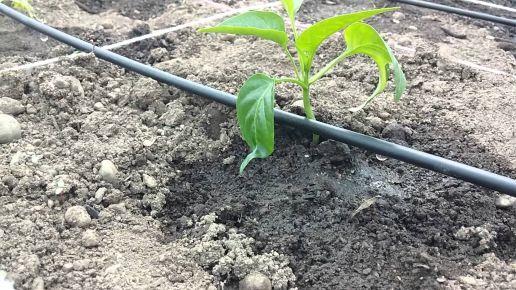FAO distributing drip irrigation systems to small farmers in eastern Ukraine

Restoring and developing small-scale farming has become a priority in Ukraine’s agricultural policy. FAO’s emergency response team in Ukraine is working to bring modern farming technologies closer to rural residents in the conflict-affected Donetsk and Lugansk regions.
Currently FAO is distributing 50 drip irrigation kits in the villages of Bolotene and Orlovske in Lugansk and Donetsk regions, respectively. The two villages are located within eight kilometers of the contact line and both are short of water for irrigation.
Each beneficiary farmer will receive a full irrigation kit – designed for kitchen garden or orchard irrigation – complete with high-capacity water tank, drip lines, drip tapes, filters, hose and tubing, sprinklers, sprayers, and valves. Each kit is custom-made and can be utilized for a variety of crops. Water flow can be precisely controlled and deposited at the base of the plant, maximizing the water’s effects and minimizing waste.
“The fertile land in Ukraine has a great potential for cultivating high-value crops if modern irrigation systems are provided,” said Farrukh Toirov, coordinator of FAO’s emergency response programme in Ukraine. “There are about 2.8 million hectares of farming land in the Lugansk and Donetsk regions, but the irrigation infrastructure is old and often not operational.”
Last year, a group of 50 small-scale farmers in the villages of Kodema and Krymske in Donetsk and Luhansk regions were provided with drip irrigation systems and trained on their use. All of these the pilot installations and their established water supply systems are operating successfully.
“After last year’s distribution, we have become even more convinced that drip irrigation is not merely an additional means of increasing productivity, but one of the essential components for modernization of agricultural practices,” Toirov said. “Our experience shows that this technology can more than double incomes within the first year of proper use.”
In the past two years, FAO has supported nearly 30 000 households in the most hard-to-reach villages along the contact line – by providing hay, animal fodder, poultry, and agricultural equipment. By late spring 2018, FAO humanitarian support will target an additional 5 000 households that have suffered significant losses due to military conflict in the area.
FAO’s emergency programme in eastern Ukraine is financed by the governments of Canada and France, as well as by FAO’s own resources, with the overall objective of enhancing food security for more than 45 000 people residing along the contact line.
16 February 2018, Kyiv, Ukraine
